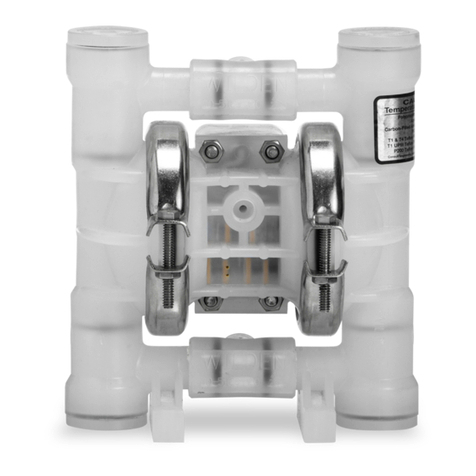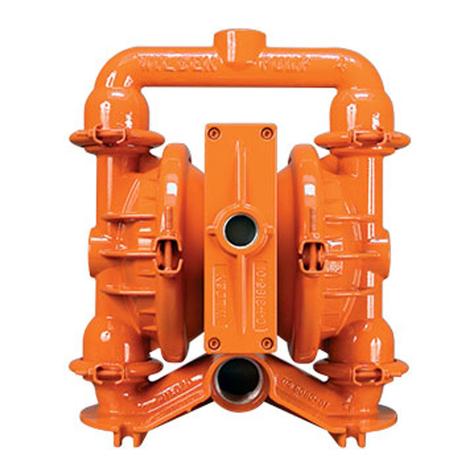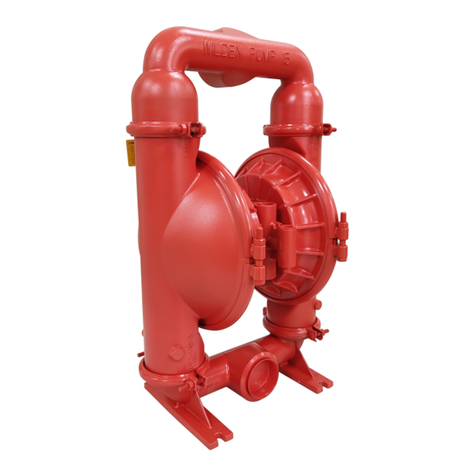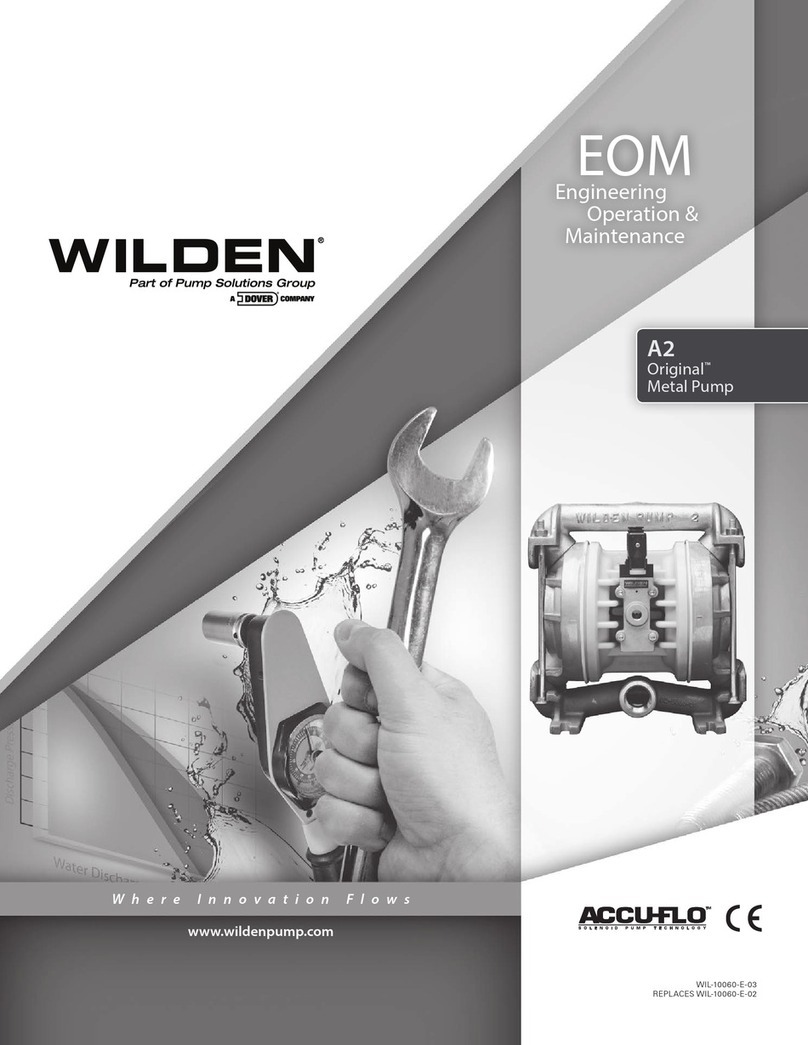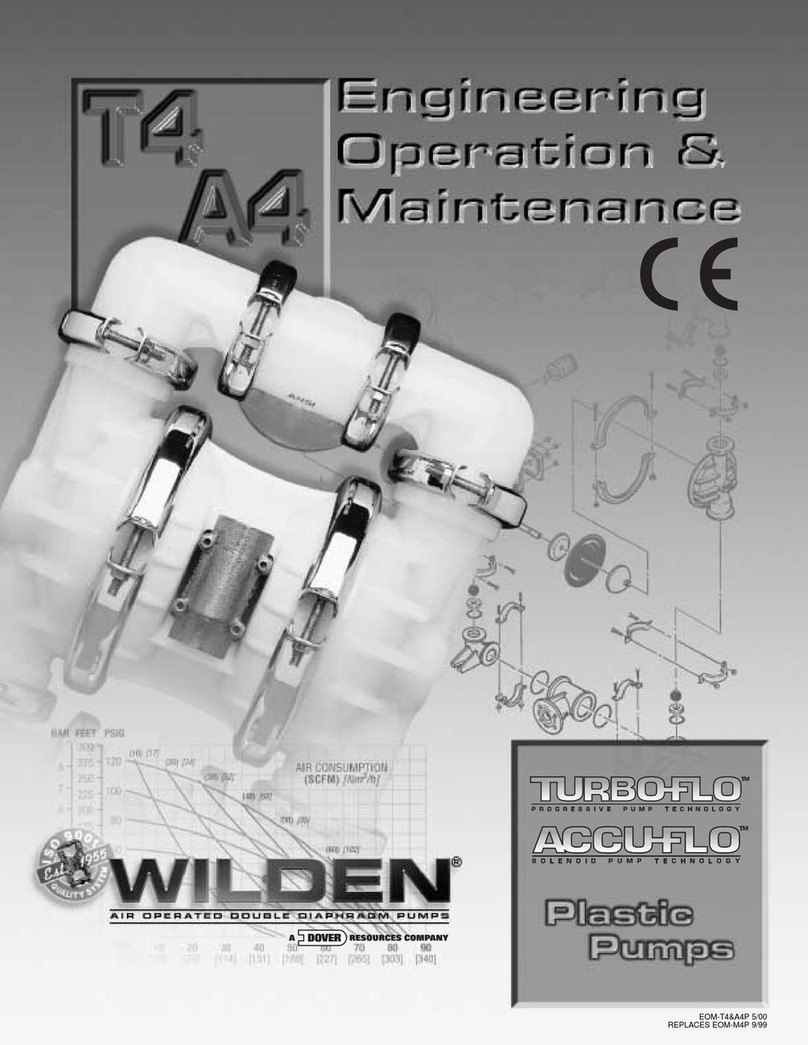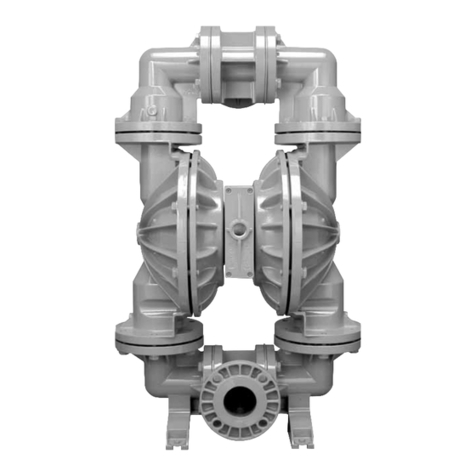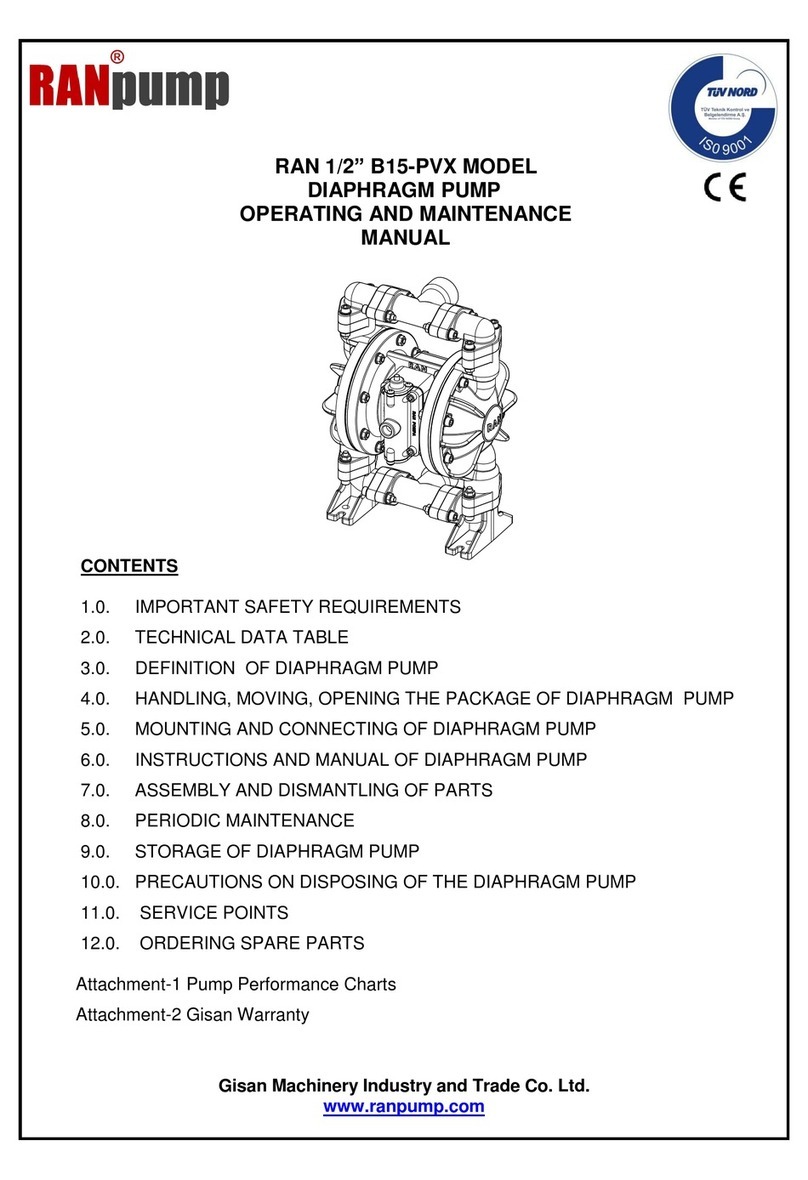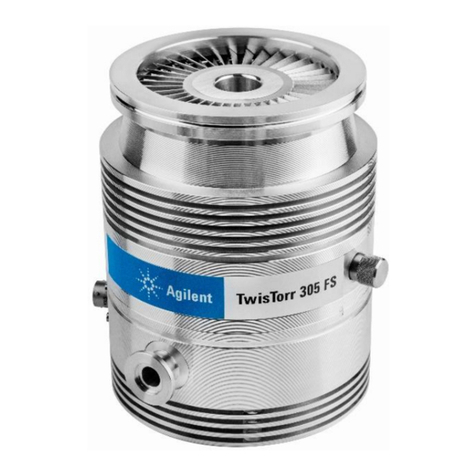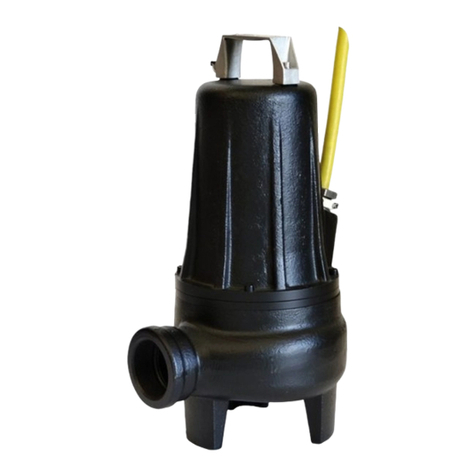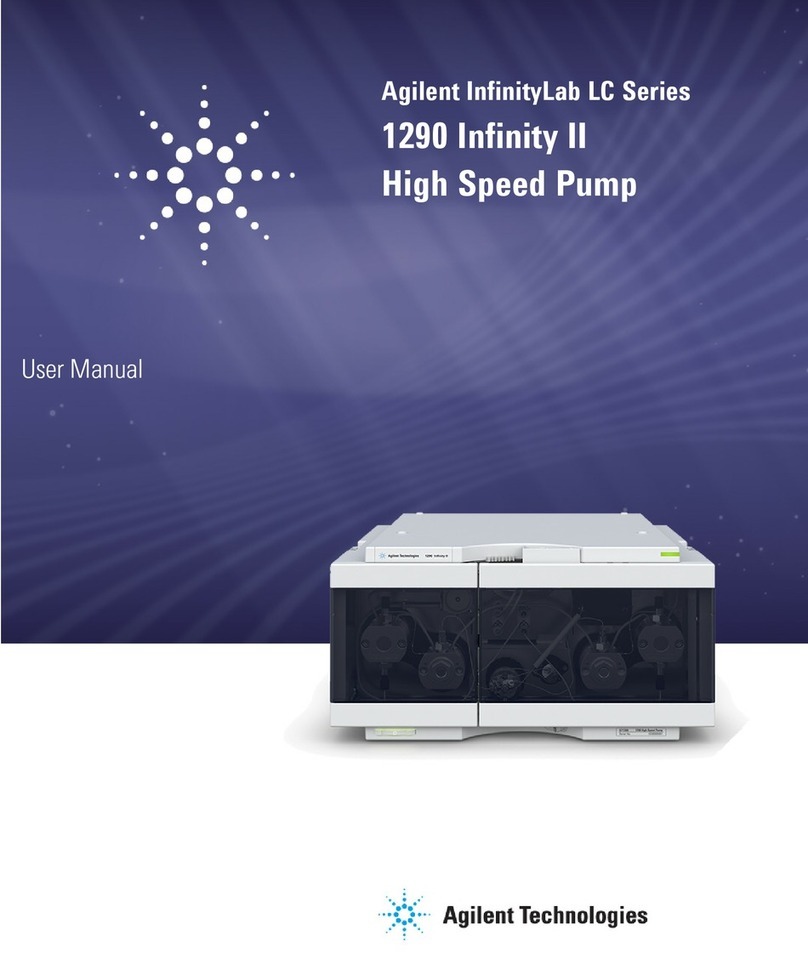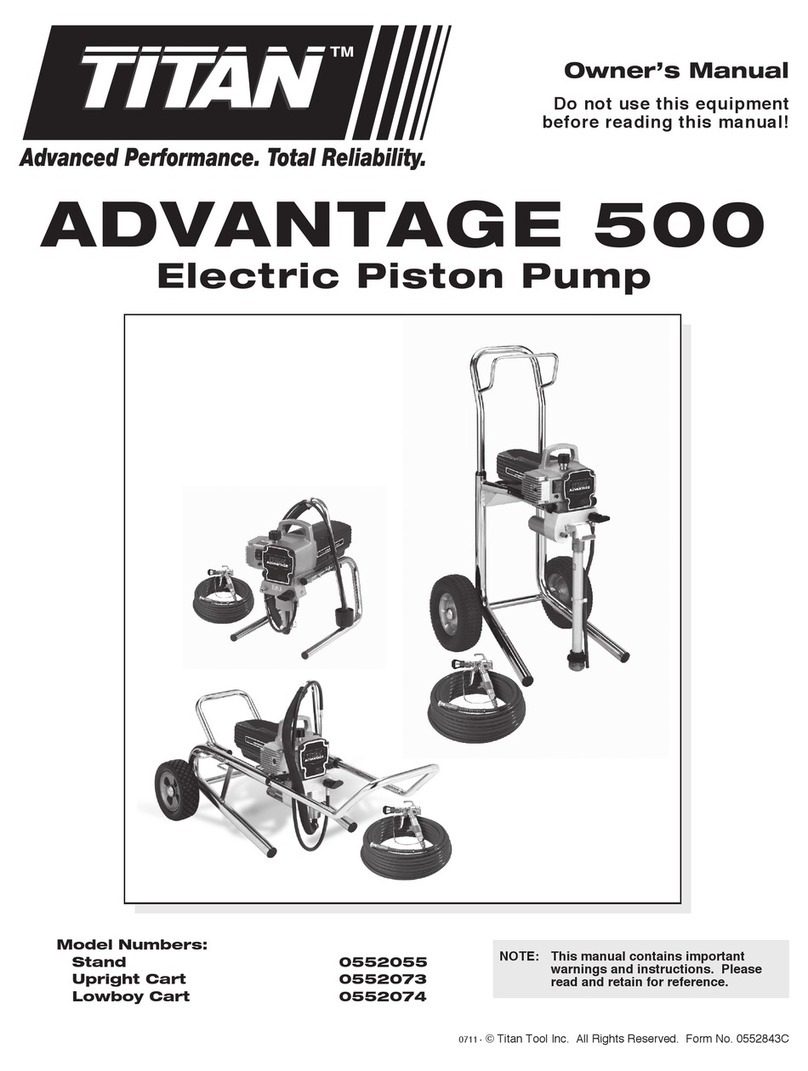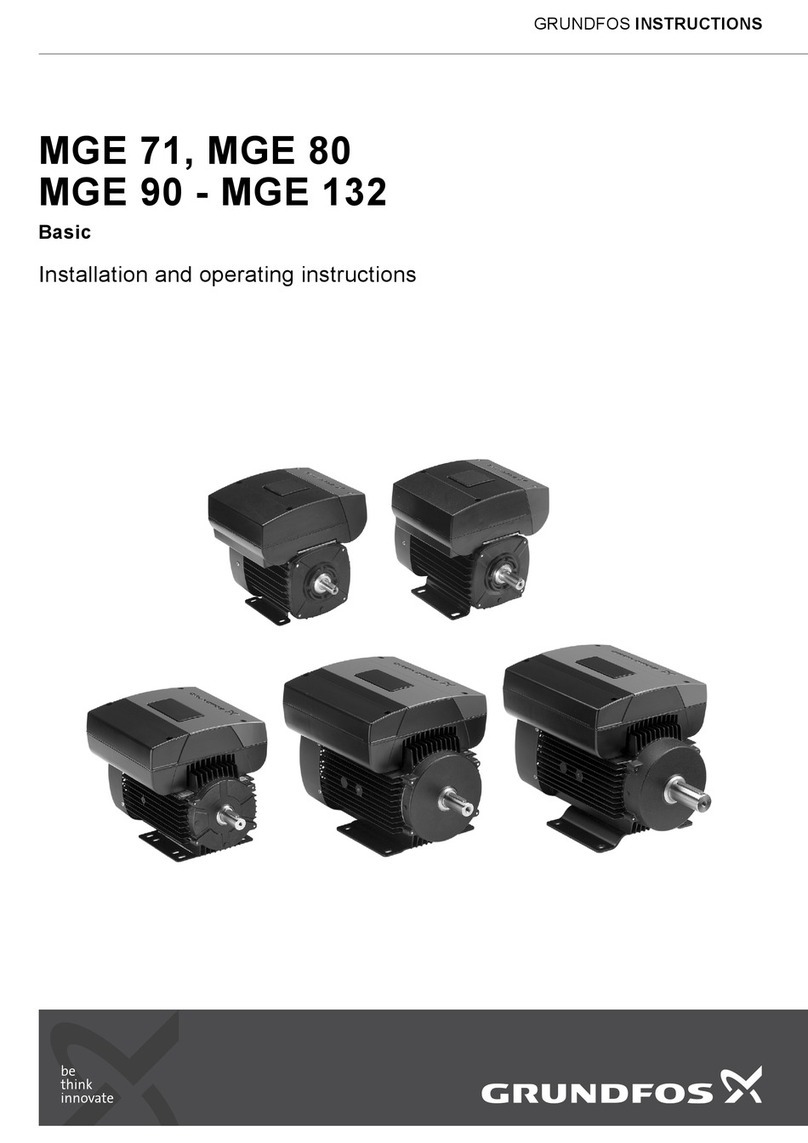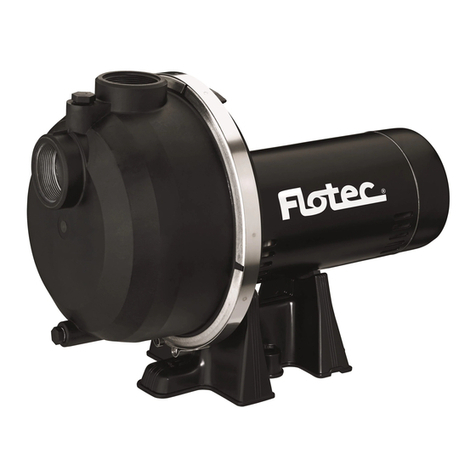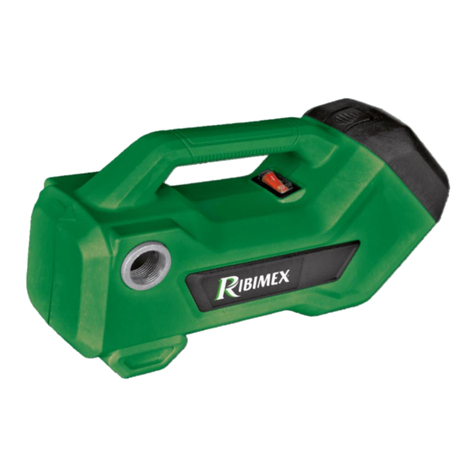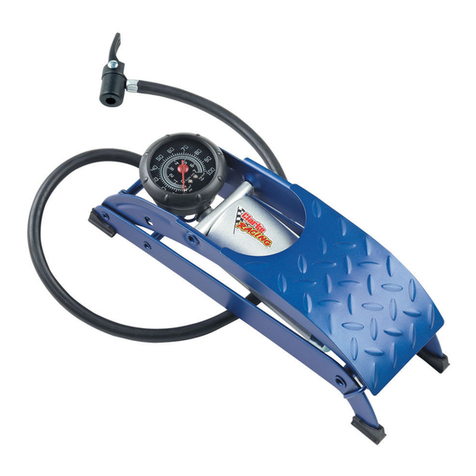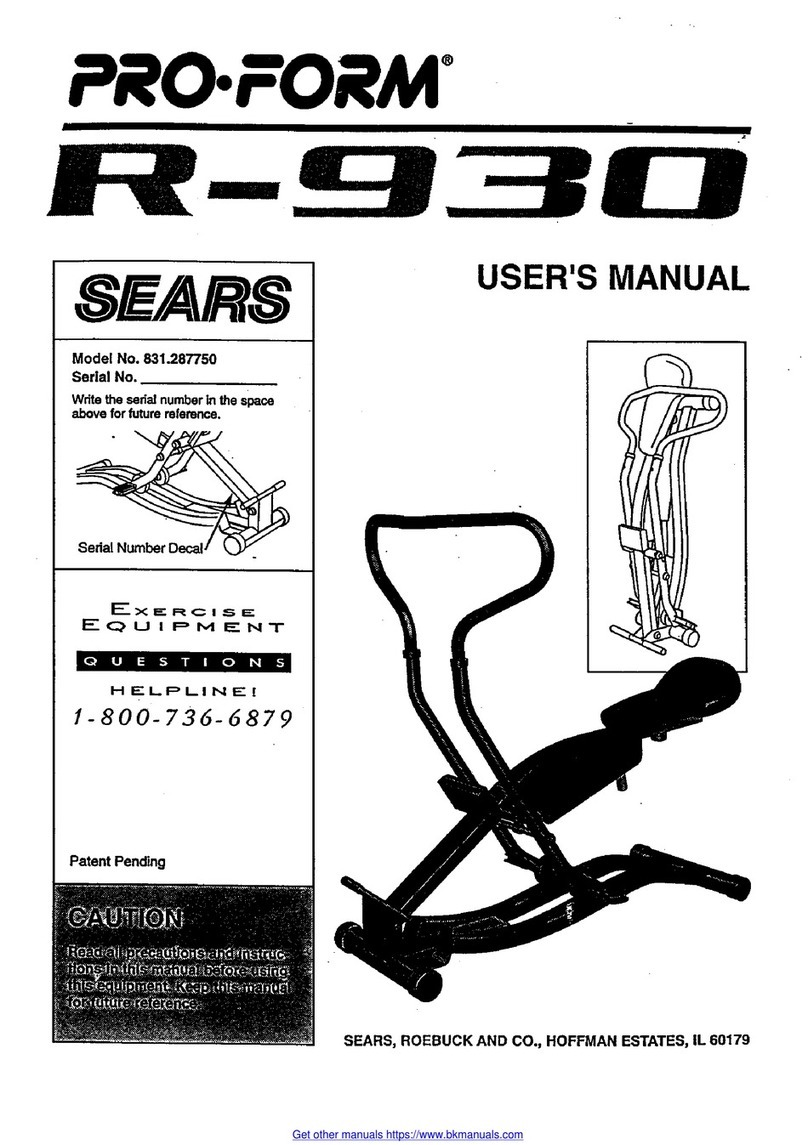WILDEN PUMP & ENGINEERING, LLC 8WIL-16080-E-01
SUGGESTED INSTALLATION
Section 6
INSTALLATION: Months of careful planning, study and selection
efforts can result in unsatisfactory pump performance if installa-
tion details are left to chance.
Premature failure and long-term dissatisfaction can be avoided if
reasonable care is exercised throughout the installation process.
LOCATION: Noise, safety and other logistical factors usually dictate
where equipment should be situated on the production floor.
Multiple installations with conflicting requirements can result in
congestion of utility areas, leaving few choices for siting additional
pumps.
Within the framework of these and other existing conditions, every
pump should be located in such a way that the following key
factors are balanced against each other to maximum advantage.
ACCESS: First of all, the pump’s location should be easily accessible.
If it’s easy to reach the pump, maintenance personnel will have
an easier time carrying out routine inspections and adjustments.
Should major repairs become necessary, ease of access can play a
key role in speeding the repair process and reducing downtime.
AIR SUPPLY: Every pump location should have an air line large
enough to supply the volume of air that is necessary to achieve
the desired pumping rate. For best results, the pumps should use
a 5-micron air filter, needle valve and regulator. The use of an air
filter before the pump will ensure that the majority of any pipeline
contaminants will be eliminated.
SOLENOID OPERATION: When pump operation is controlled by a
solenoid valve in the air line, three-way valves should be used.
This valve allows trapped air between the valve and the pump to
bleed off, which improves pump performance. Pumping volume
can be determined by counting the number of strokes per minute
and then multiplying the figure by the displacement per stroke.
MUFFLER: Sound levels are reduced below OSHA specification
when using the standard Wilden® muffler element. Other mufflers
can be used to further reduce sound levels, but they usually
reduce pump performance.
ELEVATION: Selecting a site that is well within the pump’s dynamic
lift capability will ensure that loss-of-prime troubles will be elimi-
nated. In addition, pump efficiency can be adversely affected if
proper attention is not given to site location.
PIPING: Final determination of the pump site should not be made
until the piping concerns regarding each possible location have
been evaluated. The impact of current and future installations
should be considered ahead of time in order to make sure that
inadvertent restrictions are not created for any remaining sites.
The best place possible to locate the pump will be a site featuring
the shortest and straightest hook-up of suction and discharge
piping. Unnecessary elbows, bends and fittings should be avoided.
Pipe sizes should be selected so as to keep friction losses within
practical limits. All piping should be supported independently of
the pump. In addition, the piping should be aligned so as to avoid
placing stresses on the pump fittings.
Flexible hose or expansion joints can be installed to aid in absorb-
ing the force created by the natural reciprocating action of the
pump. If the pump is to be bolted down to a solid foundation, a
mounting pad that is placed between the pump and the foun-
dation will assist in minimizing pump vibration. If quick-closing
valves are installed at any point in the discharge system, or if
pulsation within a system becomes a problem, a surge suppressor
should be installed to protect the pump, piping and gauges from
surges and water hammer.
If the pump is to be used in a self-priming application, be sure that
all connections are air-tight and that the suction lift is within the
model’s operational ability.
NOTE: Materials of construction and elastomer materials have an
effect on suction-lift parameters.
When pumps are installed in applications involving flooded
suction of suction head pressures, a gate valve should be installed
in the suction line to permit closing of the line for pump service.
Wilden® TZ series pumps cannot be used in submersible appli-
cations. For submersible applications requiring a single point
exhaust, please consider Wilden Pro-Flo X Series pumps.
Pumps in service with a positive suction head are most efficient
when inlet pressure is limited to 0.5-0.7 bar (7-10 psig). Premature
diaphragm failure may occur if positive suction is 0.7 bar (10 psig)
or higher.
BLOW OUT AIR LINE FOR 10 TO 20 SECONDS BEFORE ATTACHING
TO PUMP TO MAKE SURE ALL PIPE LINE DEBRIS IS CLEAR. ALWAYS
USE AN IN-LINE AIR FILTER.
PUMPS SHOULD BE THOROUGHLY FLUSHED WITH WATER BEFORE
INSTALLING INTO PROCESS LINES. FDA AND USDA PUMPS
SHOULD BE CLEANED AND/OR SANITIZED BEFORE USE ON EDIBLE
PRODUCTS.
CAUTION: DO NOT EXCEED 8.6 BAR (125 PSIG) AIR-SUPPLY PRES-
SURE.
AIR-OPERATED PUMPS: To stop the pump from operating in
an emergency situation, simply close the “shut off” valve (user
supplied) that is installed in the air-supply line. A properly func-
tioning valve will stop the air supply to the pump, therefore halt-
ing output. The shut-off valve should be located far enough away
from the pumping equipment so that it can be reached safely in
an emergency situation.
NOTE: In the event of a power failure, the shut-off valve should be
closed if the restarting of the pump is not desired once power is
regained.

























